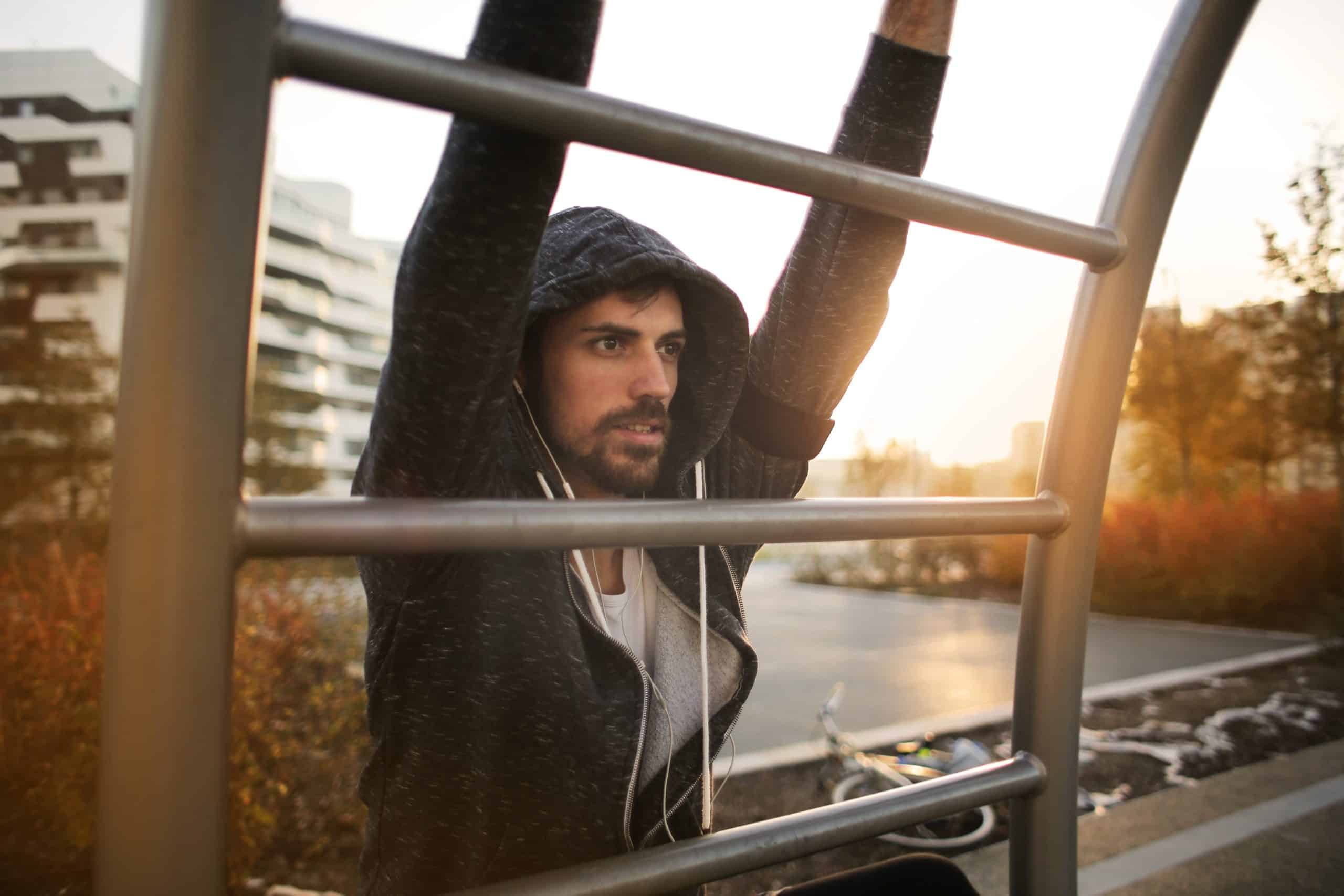The basic principle of bodily movement is that your body moves as one system. The human body relies on several systems for its operation: the muscular, skeletal, nervous, cardiovascular and endocrine systems (to name just a few) are all involved in every detail of your body’s movement. Whether it’s getting out of bed, sitting down on a chair, walking to the bathroom, smiling, frowning, pressing your foot on the gas pedal in the car, or doing a set of burpees, these body systems are involved in every aspect movement.
The Kinetic Chain
From an anatomical and exercise perspective, the human body is often looked at and studied by what’s called the kinetic chain, which is generally divided into five complexes:
-
Foot/ankle
-
Knee
-
Hip
-
Shoulder
-
Head/neck
To understand how the kinetic chain is applied, let’s look at the push-up.
The Kinetic Chain Applied
During the push-up, the foot/ankle is dorsiflexed and stabilized, with the ball of your foot on the ground. Your knee is extended and your hip complex is stabilized by contracted gluteal muscles. Your shoulders stabilizes your torso on the upward and downward push-up movement. The neck holds the head parallel to the ground throughout the entire movement.
As a general principle, if one part of the kinetic chain is damaged, it will affect another part. If you’re doing the push-up with a broken left ankle, your right ankle will support an inordinate amount of weight and pressure from the rest of the body, which will then cause your right gluteal muscle and right hip to bear more weight. This imbalance, if sustained over time, can lead to movement compensations, synergistic dominance, and potentially injuries.
The inverse is also true. If the muscles in your kinetic chain are strengthened and used appropriately, your entire kinetic chain will benefit from their strength. If you’re doing the push-up with strong pectoral muscles, your shoulders and triceps will bear less weight, which will help avoid movement compensations, synergistic dominance and potential injuries.
One Body, Many Members
The apostle Paul picks up on this interdependence and uses the body as an apt metaphor for the church in 1 Corinthians 12:12-27. Right after his discussion on spiritual gifts in the church (1 Corinthians 12:1-11), Paul teaches the Corinthians the reality that while they are many members, in Christ they are one body together (1 Corinthians 12:12-13).
Paul makes two general points in this passage about the body, which can both be applied to the church.
The first is that the body does not consist of just one member. The foot, hand, ear and eye all belong to the body equally and all have unique role to play in the body’s function (1 Corinthians 12:14-17). Not only do they have a unique role, but also God is the one who created the parts and gave them their function (1 Corinthians 12:18-20). In His infinite wisdom, God is the one who arranges each unique member of the body so that His orchestration of the members results in one body that can move.
The second is that the members of the body rely on each other for functioning. The individual members of the body can’t turn to each other and say “I’ve got this, I don’t need you”. The eye cannot operate independently from the hand, nor the head independently from the foot (1 Corinthians 12:21). Even the smallest and weakest parts of the body have a God-given function, which means there should not be division in the body, but care for each separate member (1 Corinthians 12:22-25). If one part of the body suffers, all parts of the body suffer (1 Corinthians 12:26).
The Body of Christ
As Paul concludes his teaching, he states that the church is the body of Christ (1 Corinthians 12:27). The church belongs to Christ, was purchased by His blood, redeemed through His sacrifice, liberated through His resurrection, and now the members are woven together in a unit that functions as His body. In God’s wisdom He provides each member with a role and function to play (1 Corinthians 12:28-31) for the strengthening of the body of Christ.
As a part of His body, we as members are interdependent on each other for functioning, just like the kinetic chain. “If one member suffers, all suffer together; if one member is honored, all rejoice together” (1 Corinthians 12:26). If one part of your body fails while performing an exercise, another part of your body may be damaged as a result. But like the kinetic chain, when there is care for each member of your body, and each member functions in its place, the body as a whole succeeds and has the capability to move.
“… that there may be no division in the body, but that the members may have the same care for one another. If one member suffers, all suffer together; if one member is honored, all rejoice together” (1 Corinthians 12:25-26).
Recent Posts
- 3 Things that Helped Me Lose 25 Pounds
- 5 Questions for Better Sleep
- New to exercise? Try this 3x/week home gym routine
- Don’t Feel Like Exercise? (It’s Not Lack of Willpower)
- The Surprising ROI of Your Morning Coffee
- 3 Steps To Enjoy Dessert While Losing Weight
- When Motivation for Exercise Tanks
- A Father’s Impact on the Fitness of His Kids
- 3 Things Weight Maintainers Do
- What I Learned After 2+ Months Off Social Media
Tags
Ready to get started?

Layman's Fitness is dedicated to providing God-exalting information, motivation, methods, and workout plans so that the everyday man is better equipped to glorify God with his body.
Learn More
